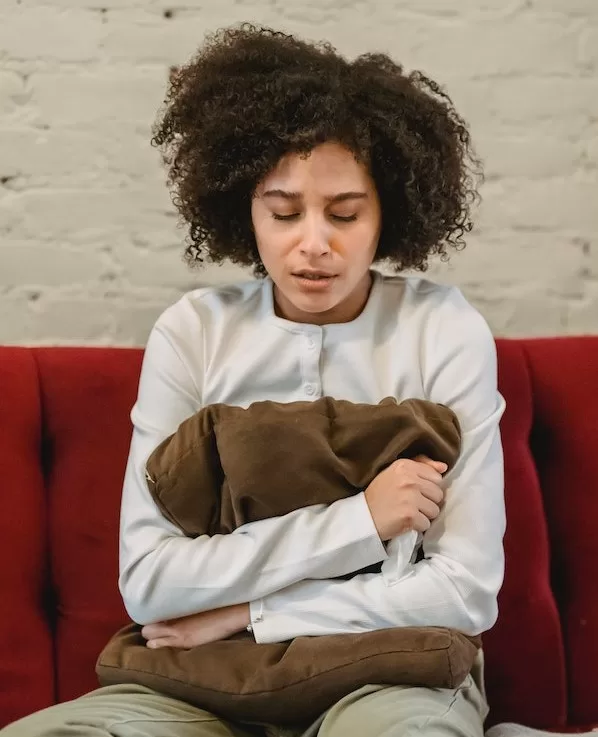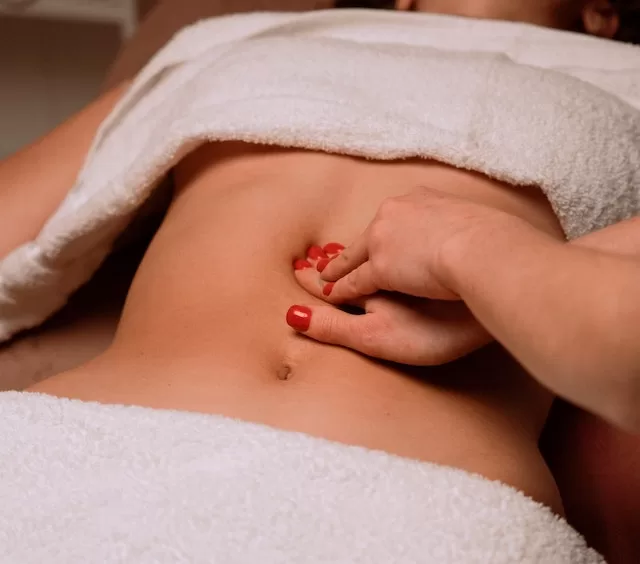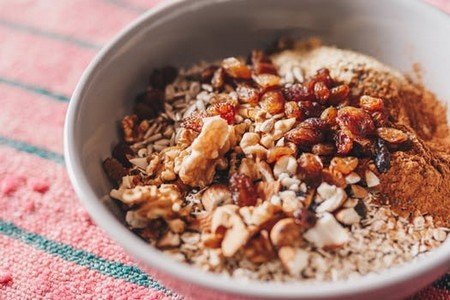Uterine fibroids are growths in or around the uterus, which grow from the muscle layers of the uterus. As per various studies and reports, uterine fibroids may affect about 80% of women Fibroids can be small and inconspicuous about the size of a walnut or they can also be large – up to the size of a grapefruit or a melon. Moreover, women may experience symptoms of fibroids or may not have physical signs.

Women can have multiple fibroids of varying sizes and densities. Uterine fibroids shrink dramatically in size after a woman passes through menopause. Read further to know the types and symptoms of fibroids.
Types of Uterine Fibroids
There are four types of uterine fibroids:
1. Intramural fibroids grow on or inside the wall of the uterus.
2. Subserosal fibroids grow on the outside of the uterine wall.
3. Submucosal fibroids grow inside the uterus or womb.
4. Pedunculated fibroids grow on stalks.
Intramural Fibroids
Intra means inside, so intramural fibroids are those that are found inside the uterine wall. These are the most common type of fibroid tumors. Since they develop and grow inside the uterine wall, the result is that they make the uterus feel as if it is larger. This is known as “bulk syndrome.” Their growth can cause pressure both on the bladder as well as the uterus, pelvic and back pain, excessive bleeding, and frequent urination. They may also be responsible for many miscarriages and infertility issues.
Subserosal fibroids
This type of fibroid is located in the serosa (outermost layer) and outside the wall of the uterus, also called the womb. They continue their outward growth. Subserosal fibroids can cause tissue compression in areas that are surrounding it, such as the bladder and/or bowel. They are not generally the cause of excessive bleeding, as they do not affect a woman’s menstrual flow.
Submucosal Fibroids
The mucosa refers to the lining of the uterus. Sub means below. Therefore, submucosal fibroids are those tumors that are located just below the lining of the uterus. While they are the most infrequent type of fibroid, they often cause prolonged menstrual periods and excessive heavy bleeding, a condition called menorrhagia.
Pedunculated Fibroids
This type of fibroid is actually one that grows on a stalk, called the peduncle. It can develop and grow either in the uterus itself (a submucosal fibroid) or on the outside of the uterus (a pedunculated fibroid tumor). Although rare, pedunculated fibroid tumors can cause extreme pain when the stalk becomes twisted. The number, shape, density, and location of the different types of fibroid tumors are important when discussing or planning various treatment therapies, including recommended natural therapies.

Reasons for uterine fibroids
As per medical researchers and physicians, fibroids are greatly affected by changing estrogen levels, which play a part in fibroid tumor development and growth. The causes of fibroids can be
- genetic,
- hormonal,
- environmental, or
- some combination of all of these.
When a woman’s estrogen levels increase, for example, during pregnancy, fibroids tend to grow at a more rapid pace.
Women taking contraceptive pills, therefore, have higher levels of estrogen and are more likely to develop symptoms of fibroids. Also, fibroids cause a number of symptoms. These may range from painful and heavy periods to interference with other organs and nerves, due to their large sizes pressing on them. For example, some women report frequent urination and pains in their lower back and legs.

Severe Symptoms of Fibroids
You’re already aware that small fibroids can present little or no symptoms, but can grow and cause serious health complaints if left undetected. For example, fibroids can cause the pelvic region to swell to the point of altering physical appearance. Large fibroids can make women look pregnant.
Large masses (or a single large mass) of uterine fibroids could be filling the abdominal area, obstructing other organs such as the bladder, colon, vagina, uterus, and the nerves serving other parts of the body. Also, a large fibroid pressing on the bladder causes frequent urination. Digestive complaints are also a result of fibroids blocking the intestines.
More signs and symptoms of Fibroids
Fibroids can also cause painful sexual intercourse or dyspareunia. Low back pain and/or pain in the legs are often due to uterine fibroids that are pushing toward the nerves in the back. Many infertility issues, early onset of labor, and frequent miscarriages are caused by uterine fibroids. Occasionally, a fibroid blocks the entrance to the Fallopian tube, making pregnancy impossible.
Besides, some women experience symptoms of fibroids such as sudden, severe pain due to a type of fibroid known as a pedunculated fibroid. These are fibroids that grow on a stalk, called a pedicle. The pain occurs when the stalk becomes twisted. Pedunculated fibroids may either grow out into the abdomen (this type is called a subserosal pedunculated fibroid) or into the endometrial cavity (a submucosal pedunculated fibroid).
Fibroids Diagnosis
A simple pelvic exam by your healthcare provider can reveal the presence of fibroids. Notably, several tests can further confirm the diagnosis to determine the size and location of the fibroids. These tests include:
Ultrasonography: It is a noninvasive imaging test that uses sound waves to create a picture of internal organs.
Magnetic resonance imaging (MRI): It uses magnets and radio waves to provide a detailed image of the internal organs.
Computed tomography (CT) scan: It creates detailed X-ray images of the internal organs from different angles.
Hysteroscopy: This technique uses a thin, flexible tubular device called a scope with a camera at its end. It is inserted in the uterus to closely examine the fibroids.
Hysterosalpingography (HSG): It provides a detailed X-ray after injecting the area with contrast material.
Sonohysterography: In this test, the physician places a small catheter inside the vagina to inject a saline solution into the uterus. The extra fluid provides clear imaging compared to a standard ultrasound.
Laparoscopy: It is an invasive procedure. Here, a small cut (incision) is made in the lower abdomen to insert a thin, flexible tube equipped with a camera to closely examine the internal organs.
The good news is that even if your fibroids are severe, it’s possible to help them by taking natural remedies.
Lifestyle Tips to Treat Symptoms of Fibroids
Sometimes, minor dietary and lifestyle changes prove to be more effective in reducing and preventing fibroids. Clinical study suggests that excess weight and obesity often increase the risk of fibroids. Since diet plays a crucial role in weight management, eliminating certain foods from your meals can help ease the symptoms. So, foods containing excess refined carbohydrates and added salt or sugar may worsen fibroids.
Therefore, avoid foods with refined carbohydrates, such as
- White rice
- Pasta
- Corn Syrup
- Soda and sugary drinks
- Boxed cereals
- Chips
- Crackers
- Baked Goods

You can replace these food items with unprocessed, fiber-rich, whole foods, such as
- Raw/Cooked vegetables
- Fruits
- Dried Fruits
- Brown Rice
- Whole grains
- Fresh, dried herbs
- Quinoa
- Whole grain pasta and bread
Fruits, vegetables, and unprocessed food items reduce inflammation, increase satiety, prevent weight gain, and balance hormones. Such foods, eventually, reduce the risk of fibroids. Additionally, do not forget to include dairy products in your diet. These are rich in calcium, phosphorus, and magnesium. Dairy products are also a good source of Vitamins A and D.
An effective natural treatment for fibroids is a natural healing technique known as uterine fibroid massage. How do Uterine Fibroid Massage Techniques work? Continue reading…
Is Fibroid Massage Effective?

Uterine fibroid massage techniques are external massage techniques. These have been practiced successfully for centuries in Mexico and Latin America by midwives and natural healers. It is also used in Traditional Chinese Medicine to help women with reproductive issues such as fibroids, endometriosis, and blocked fallopian tubes.
During the uterine massage, the healer’s hands move slowly across the abdomen and lower back in order to both soften the muscles and allow the uterus to reposition to its normal location. The theory behind uterine fibroid massage is that the uterus becomes distorted or out of shape due to the presence of fibroids. This, in turn, results in symptoms such as excessive or prolonged or painful menstrual periods often accompany the fibroids.
No matter what the size and number of uterine fibroids, all women who have uterine fibroid massage will generally benefit from improved circulation and lymphatic drainage, as well as a decrease in the formation of scar tissue.
For others, it is simply a massage and self-massage technique that makes them feel good, relieves pain, and helps in reproductive health.
Other Home Remedies and Effective Natural Treatments
Certain home remedies prove to be effective in treating fibroids naturally. These include:
Herbal Remedies for Fibroids Treatment
Herbs are naturally occurring, potent medicines that can help prevent and reduce fibroids. These include:
Traditional Chinese Medicines
Gui Zhi Fu Ling Tang is a popular herbal formula. It contains several Chinese herbs that balance hormone levels and prevent fibroids.
Green Tea
It contains a bioflavonoid named EGCG that reduces inflammation, removes toxins, and helps in reducing the size and number of fibroids.
Chasteberry
It is suitable for patients with severe symptoms like painful periods and heavy menstrual bleeding.
Lemon juice
Interestingly, the citric acid in lemon juice is an antioxidant and helps reduce fibroids. Mix two tsp of lemon juice with one tsp of baking soda in a glass of water. Drink regularly for best results.
Garlic
It has antioxidant properties to cure fibroids. Vitamin C and Vitamin B6 present in garlic help in balancing female hormones. Also, it reverses fibroid growth by removing catabolic wastes from the uterine tissue and pelvic cavity. You can chew garlic cloves or add them to your food.
Ginger
It stimulates the endocrine glands and restores hormonal balance. Either consume freshly-grated ginger or add some juveniles to your food to manage symptoms of fibroids naturally.
Turmeric
Add a pinch of turmeric to your food while cooking. Alternatively, you can boil some water with a pinch of turmeric powder. Boil it for 15 minutes and drink once it cools down.
Beetroot
Surprisingly, the betacyanin compound in beetroot removes toxins from the liver and helps balance the acidity inside the body. Mix fresh beetroot juice with a tbsp of blackstrap molasses and aloe vera gel. Regular consumption of this mixture can help reduce fibroids.
Olive oil
It prevents the growth of fibroids by blocking oxygen and reducing the level of estrogen. Add one tbsp of olive oil with one tbsp of lemon juice in a glass of water. Drink every day on an empty stomach.
Apple cider vinegar
Add two tbsp of apple cider vinegar to a glass of water and drink regularly for effective results.
Fish
Include cold-water fish such as tuna, salmon, sardines, and herring to reduce fibroids.
Castor oil
It removes excess toxins from the body and stimulates the lymphatic and circulatory systems. A traditional remedy suggests soaking a clean washcloth in a bowl of castor oil and placing it on the abdomen area. Next, cover the area with plastic wrap. Place a clean towel over it and put a hot water bottle on top. Keep it like that for half an hour. Repeat the process thrice a week for three months.
Acupuncture
Acupuncture therapy can help patients with bleeding, menstrual cramps, and fibroids when practiced with other natural remedies. You can consult a specialist to target specific points for fibroid treatment.
Yoga And Exercise
Mild exercise and regular yoga sessions help in managing stress and reduce pain and discomfort caused due to fibroids. Here are some yoga asanas that you can perform for good uterine health:
- Baddha Konasana
- Bhujangasana
- Paschimottanasana
- Janu Sirsana
- Viparita Karani
- Moola bandha asana
These yoga poses boost blood circulation and remove toxins from the uterus.
Related Post–
Yoga Poses to Regulate Menstruation Problems
References
https://my.clevelandclinic.org/health/diseases/9130-uterine-fibroids
https://www.healthline.com/health/fibroids-natural-treatment#traditional-treatment
https://www.pristyncare.com/blog/home-remedies-for-uterine-fibroids-pc0441/




